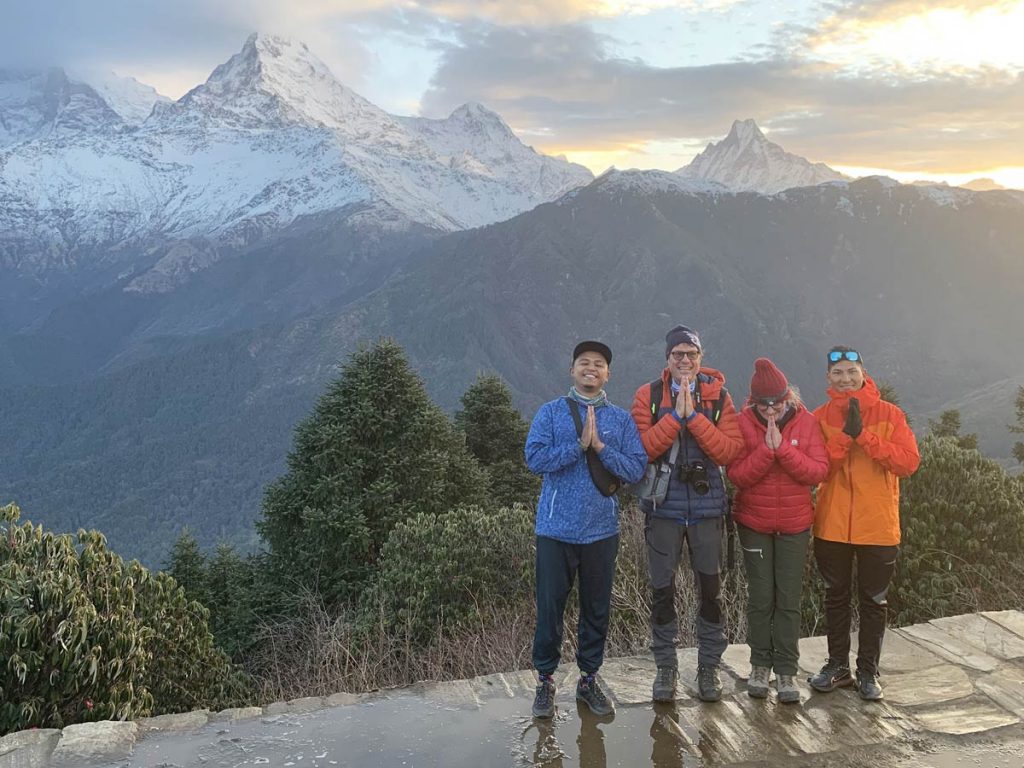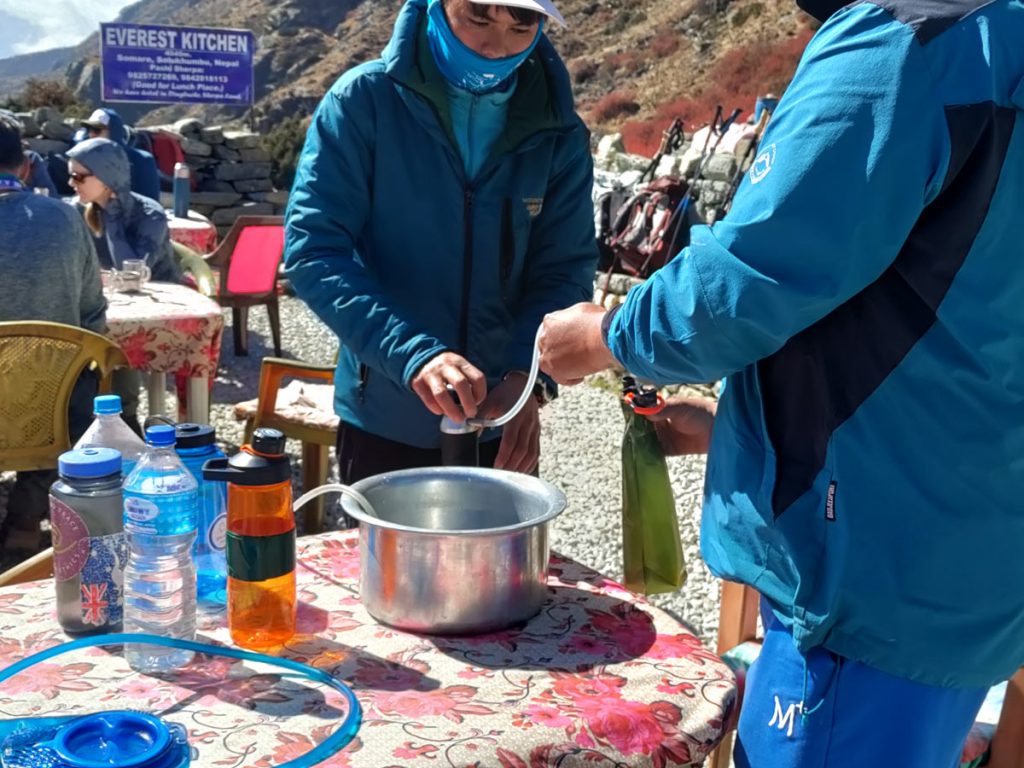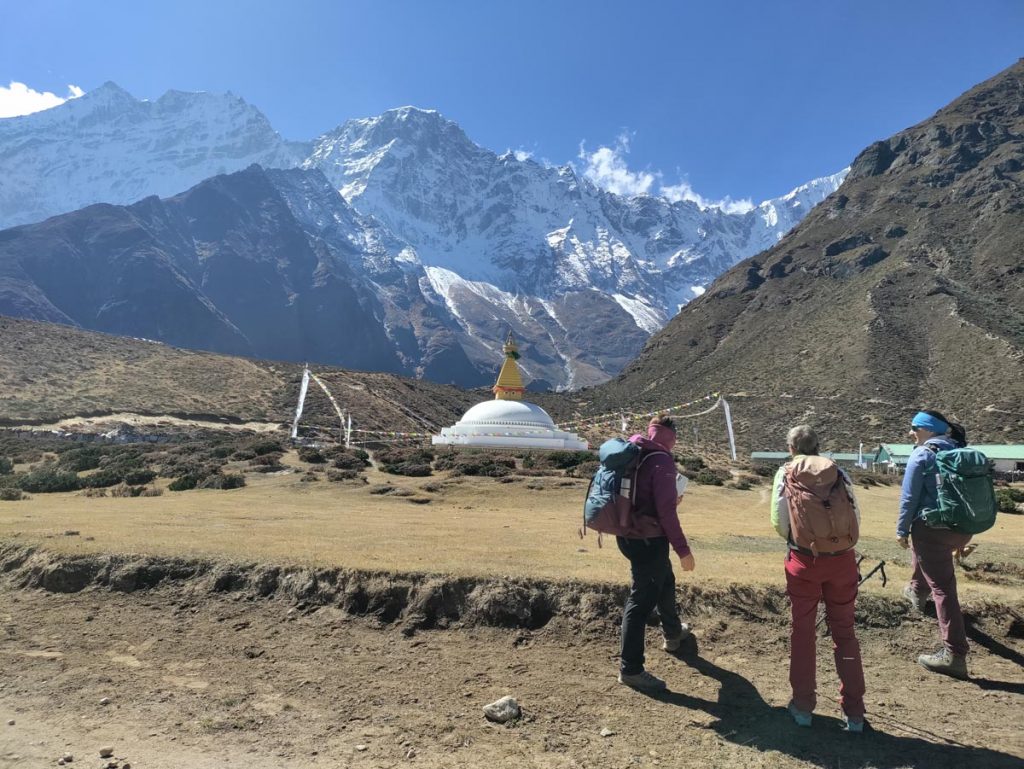Trekking in Nepal is an experience out of this world as you get to witness the majestic Himalayas while traversing through unique landscapes and experiencing the warm local hospitality and rich cultural tapestry of Nepal.
However, an adventure in this dream destination also comes with certain responsibilities to ensure an enhanced experience while also maintaining the sanctity of the natural beauty of the country.
Therefore, in this blog we have compiled a list of dos and don’ts of trekking etiquette in Nepal which will come in handy for anyone looking for a safe and comfortable trekking adventure in Nepal.
Understanding Trekking Etiquette
Trekking is a break from the hustle and bustle of daily life and from the restrictions that might surround you in the cities. However, there are some unsaid rules and guidelines which are expected to be followed by the trekkers.
These trekking etiquettes are put in place to ensure the safety and comfort of the trekkers while also making sure that the journey doesn’t harm the trekking region and its ecosystem in any way.
These trekking etiquettes involve basic things like respecting local customs, maintaining the trail, not littering around, respecting the might of nature, and ensuring to maintain a balance.
Trekking etiquettes are important in Nepal as every trekking route passes through many villages where culture and customs are a big part of the daily lives of people and respecting them is mandatory to maintain harmonious relationships.
It also helps ensure safety of trekkers by avoiding any kind of misunderstanding with the locals. Besides that, it also helps protect the fragile and pristine beauty of the landscapes of Nepal.
Dos of Trekking Etiquette
Interact with Local Communities
One of the big parts of trekking is the cultural immersion that comes with it which can be a completely transformative experience for you as you get to experience and be a part of the customs of a completely different religion and many cultural groups.
However, it won’t come to you without any effort. While the people you will come across in the trekking routes of Nepal are welcoming, they would appreciate the same zeal for interaction from your side too.

Therefore, you ought to embrace the Nepali spirit and interact with the local community. Small gestures like learning basic Nepali phrases like ‘Namaste’ (hello), ‘Dhanyabad’ (thank you), and small gestures of respect like bowing down your head and greeting people with a smile can go a long way.
By doing so, you are keeping yourself open to interactions with the local people and displaying the willingness to participate in their customs.
Environmental Responsibility
While trekking, you will be experiencing the adventure of a lifetime for sure. But you will also be visiting some of the most delicate ecosystems along with exotic and fragile flora and fauna. Therefore, a big environmental responsibility lies upon you.
You ought to respect the fragile land and keep it equally beautiful for all the future trekkers. The main way to ensure environmentally responsible trekking is to strictly adhere to the ‘Leave No Trace’ policy.
Try to carry bio-degradable things like reusable bottles instead of plastic bottles, biodegradable soap, and more. And whatever you carry, make sure you carry it out and dispose of it in designated waste collection points.
If you can, carry a bag with you and collect other trash that you spot in and around the trail which can be extremely helpful to the locals for waste management.
Consider carrying a reliable water purification system or water purification tablets to minimize the usage of water bottles while on the trek. Also, avoid polluting the resources by directly washing your face in the rivers and streams of the trail.

Consume local food instead of packaged food as it keeps you healthy throughout the trek while also reducing the waste caused by packaged food. Carry solar chargers in instead of using limited local power supply which might even be unavailable at times.
If you are indulging in activities like camp firing, make sure to manage it well. Obtain prior permission and also use designated fire pits wherever possible to minimize the impact. Make sure the fire is completely extinguished before you leave the spot.
The trekking areas are home to a wide range of wildlife including several exotic and endangered animals. While you are trekking, remember that you are visiting their home. So, make sure to be respectful towards them.
Embracing sustainable trekking practices go a long way when it comes to maintaining trekking etiquettes in Nepal. Reducing waste, conserving resources, supporting local economy, and environmental protection are the main aspects of sustainable practices.
Support Local Economy
Many regions in Nepal where trekking trails are popular, even including the iconic Everest Base Camp trek, are heavily reliant on trekking industry and the hospitality business for their livelihood.
Therefore, a big part of trekking the right way is to support the local economy which is not just a trekking etiquette but also your responsibility as a trekker as the same locals tend to your every need while you are on the trek. And it can also be mutually beneficial most of the time.

You can do so by hiring reputed local trekking agencies, local guides, and porters. Along with strengthening the local economy, this also provides you the much-needed guidance and support as the guides know the region inside out and can ensure your safety throughout.
Besides that, also make sure to stay in accommodation options like teahouses, lodges, and homestays owned by the people locally and purchase small and big items from the local shops to distribute the economic benefits throughout the trail.
Purchasing food, services, and even souvenirs such as handicrafts, artifacts, and clothes from the local vendors can also allow you to get your hands on a unique item while also helping the local economy.
Respect Local Customs
While trekking through the remote villages of Nepal, it is important that you respect the local customs as Nepal is a country boasting a rich cultural heritage with tons of rituals and traditions.
Although you can do some prior research regarding the cultural nuances specific to the route that you are trekking, the basic key to show your appreciation is to observe the local customs and follow them.

The basics that you can follow are taking off your shoes before entering any house or temple in Nepal, dressing modestly while visiting any religious place, maintaining silence during any prayers, and always seeking permission.
Whether you are entering somebody’s house or photographing any ritual and custom, make sure to seek permission as sometimes photography during rituals can be offensive. Avoid using flash photography and also try not to take pictures of religious statues.
Responsible Porterage
Your trekking experience would be a disaster if not for the porters and that is why the porters are considered to be the backbone of trekking industry in Nepal. Therefore, you have to be very respectful towards them.
While the porters do carry a fair share of the weight of your luggage, they are doing it as a part of their job and to help you out. So, treat them with respect while also acknowledging their hard work.

Do not overburden them and partner with travel companies like Ace the Himalaya who have strict fair porterage policies where weight limits are set, and the safety and comfortability of the porters are prioritized.
Make sure to pay them fair wages for their work instead of just giving them a minimal wage because they are the true support of your trekking journey.
Don’ts of Trekking Etiquette
Cultural Insensitivity
The people in Nepal are big on their cultural values as they have deep rooted traditions and customs with a high level of respect towards them. Therefore, cultural insensitivity is a big no when you are trekking in Nepal.
When you are visiting any religious place, strictly avoid revealing clothing as it is considered to be disrespectful. Don’t wear shirts, sleeveless clothing, and any other revealing clothes like tank tops, for both men and women.
Not just temples but even while visiting some remote areas of certain trekking routes, dress modestly as the people might be slightly conservative there. Consult your guide for detailed info.
Avoid touching and photographing any religious artifacts in the religious places during your visit, especially without permission. If invited to participate in rituals, do so respectfully and follow the lead of the locals.
Do not move any sacred object like mani walls, flags, and chortens and always respect them. It is advisable to not straight up deny if offered food or drinks by the locals as hospitality is the cornerstone of Nepali culture.
Be mindful of the dietary restrictions and eat and demand accordingly as many Hindus in Nepal are vegetarian and beef is strictly prohibited in many areas and asking for it could be offensive.
Environmental Neglect
Make sure to not indulge in any activity that disrupts the ecosystem of the region as environmental neglect is the worst thing you can do while enjoying the beauty of the trekking trails as you are destroying the experience of future trekkers.
Don’t disturb the wildlife with your activities and enjoy their beauty while maintaining some distance. Avoid flash photography as you might disturb them. Also, avoid feeding them as it disrupts their natural behaviour.

Most of the trekking trails are well-marked. So, avoid straying off from the designated trail as you might end up stepping on vegetations around it and also disrupt the wildlife if you end up reaching their crossing paths.
Don’t throw unnecessary waste of any kind, especially plastics as it can be extremely harmful for the fragile ecosystem. Be mindful of the resources that you are using and indulge in responsible usage as they are limited.
Don’t pick plants when you are walking through the trails as some of them might be harmful to you even.
Health and Safety Compromises
Although trekking in Nepal is a rather safe experience, you have to be very careful about your health and safety as you will be visiting some remote locations where emergency health services might not be readily available in case of health ailments or injuries.
Acclimatize well and do your research on symptoms of altitude sickness so that you can recognize them early just in case. Take proper precautions to prevent altitude sickness. Strictly don’t continue trekking if you don’t feel well.
The locals know much more about the weather in the region than you, so don’t ignore their advice regarding weather and trail conditions further ahead. Make sure to carry a guide along with you.
Refrain from consuming alcohol and non-vegetarian food while trekking as it might cause food poisoning.
Economic Disrespect
Economic disrespect while trekking in Nepal is a common sight which is not at all promoted as it undervalues the efforts that the locals have put to ensure a safe and enjoyable experience for you as trekkers.
Don’t underpay the local guides, porters, and hotel staff as they take physically demanding work and often overwork themselves to ensure your comfort and safety. So, pay them fair wages.
Take an extra step beyond the fair wages and tip them appropriately as it is considered an important aspect of compensating them for their services. While you can tip based on your wish, standard tipping advice is to stick to tipping them at least 10-15% of the total trek cost to be divided equally.
While purchasing goods from the local vendors, bargaining is expected and allowed to. But be sure to be respectful and polite.
Recognize the value of the goods or services before bargaining and avoid excessive haggling as it is often considered to be disrespectful towards the efforts of the vendor.
Make sure to pay reasonable compensation while using local resources as the trekking routes are remote areas with limited availability of resources. Be it hot water for showers or any other service, compensate fairly and respect local business standards.





